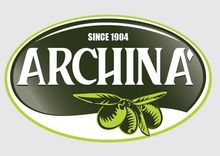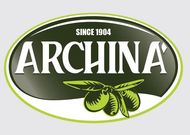Olive oil without additives and preservatives in Siderno
Oil: complete and essential food
It is a mixture in any proportion of refined olive oils and extra virgin or virgin oils, which, by law, has a maximum free acidity of 1%.
Thanks to its characteristics, it should be used for frying, as a valid substitute for seed oil or in food preparation.
While maintaining the same fatty acid composition typical of olive oils, refined oil is odorless, colourless and tasteless, free of beneficial substances such as polyphenols and marketable only in bulk.
It is obtained through an industrial refining process which reduces the acidity to a stable level of 0.3%, whilst eliminating oxidized substances and correcting any taste defects from the oils they've come from.
All the oils extracted from oil seeds are used through the use of solvent and subsequently subjected to refining processes. The seeds are first dried, then ground, mixed with hexane, as is done for pomace oils, and finally refined.
An oil extracted by using solvent from the dry residues of freshly pressed olives, then subjected to an industrial refining process and finally mixed with virgin or extra virgin olive oils, in any proportion. The law states that the acidity of pomace oils cannot exceed 1%.
This oil is extracted by using solvent or other physical processes from already pressed olives, and must go through a refining process.
This is obtained from refining crude olive-pomace oil and can possibly reach a free acidity level of 0.3%. The refined pomace oil is only able to be sold in bulk.
Classification and characteristics of olive oil
it is made from pressing olives. Its free acidity (expressed in grammes of oleic acid in 100 grammes of oil) is not more than 0.8 grammes per 100 grammes (0.8%). Furthermore, the Panel test (taste test) is free of defects, with a positive fruity note.
it is also made from pressing olives. It has a quality which is inferior to extra virgin olive oil and has a free acidity (expressed in grammes of oleic acid in 100 grammes of oil) of no more than 2 grammes per 100 grammes (2%). Slight defects are present during the Panel test.
it has a more complex origin and history than that of virgin and extra virgin olive oils. Actually, its label reads as follows: "composed of refined olive oil and virgin olive oil". It has a free acidity (expressed in grammes of oleic acid in 100 grammes of oil) of no more than 1 gramme per 100 grammes (1%).
the origin and history comes in even longer and more complex than all of the previous ones. In addition, with this specific case the label reads as follows: "this oil exclusively containing oils from treated olive pomace and oils obtained directly from olives". It has a free acidity (which is expressed in grammes of oleic acid in 100 grammes of oil) and come in at no more than 1 gramme per 100 grammes (1%).
it is so called because in ages past, it was used for lighting lamps, as a fuel, and for other non-food uses as well. This is because 'lampante' means 'lamp'. It is an oil that has serious taste defects and, for various reasons, began its life in a very bad way. This may be casued by to the climate, to diseases or to negligent procedures at some point during the production chain (in the field as well as in the mill). Lampante olive oil is not allowed to be consumed and, it is, therefore, sent to be refined. During this process, it undergoes chemical refining that involves various phases (including: de-spraying, neutralization, discolouration, deodorisation).
once obtained, it is not allowed to be consumed, but it is mixed with a virgin oil which, different to lampante oil, it in fact becomes olive oil. This is then distributed to the large-scale retail trade and purchased by the majority of consumers who are actually not very aware of the real composition and origin (they believe it to simply be olives only!), although on the label it is also specified as follows: "mixture of refined olive oils and virgin olive oils".
instead, it is a very different oil from olive oil. In fact, although at the beginning, the raw material is always the fruit, this oil is extracted from the pomace, that is, from the solid residues from the processing of the olives that takes place in the mill and therefore from what remains of parts of the residual skin, pulp and crushed seed. In fact, this solid fraction which is processed in the mill, a residual amount of oil can still be found and can be extracted using chemical solvents for production
If we must admit to our customers and clints, even this oil has to first be refined in order to become 'refined olive-pomace oil'. It is then mixed with a virgin oil, not lampante (either virgin olive oil or extra virgin olive oil) to become, precisely, 'olive-pomace oil' which is mainly used in the food industry for oven baking food preparation and for fried foods.
it is the one which has some slight defects, that our senses are even aware of. For this reason and according to current legislation, it is no longer classifiable as extra virgin, but in a lower class: that of 'virgin olive oil'. Obviously, it will be cheaper than extra virgin and is often used in frying, but also in foods kept in oil. Predominant when obtaining 'olive oils'.







